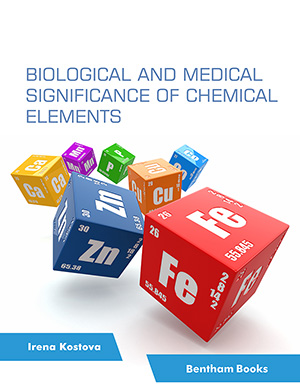Abstract
Background: Breast cancer (BC) is the second-leading cause of cancer-related fatalities in women after lung cancer worldwide. The development of BC is significantly influenced by estrogen receptors (ERs). The problem with current cancer treatments is selectivity, target specificity, cytotoxicity, and developing resistance. Thiazole scaffolds are gaining popularity in drug discovery due to their broad range of biological activity. It has the extraordinary capacity to control a variety of cellular pathways, and its potential for selective anticancer activity can be explored.
Objective: Synthesis and in-silico studies of 4-Phenyl thiazol-2-amine derivatives as anti-breast cancer agents and molecular docking was used to assess the compounds’ capacity to bind ER-α protein target.
Methods: In this study, 4-Phenylthiazol-2-amine derivatives (3a-j) have been synthesized, and using Schrodinger software, molecular docking and ADME studies of the compounds were conducted.
Results: Most of the synthesized compounds have shown dock scores ranging from -6.658 to - 8.911 kcal/mol, which is better than the standard drug tamoxifen (-6.821 kcal/mol). According to molecular docking, all compounds fit in the protein’s active site and have the same hydrophobic pocket as the standard drug tamoxifen. Further, all of the compounds’ ADME properties are below acceptable limits.
Conclusion: Compound 3e showed the best docking score of -8.911. All compounds’ ADME properties are within acceptable limits, and their p/o coefficients fall within a range, suggesting they will all have sufficient absorption at the site of action. These compounds can be evaluated invitro and in-vivo in the future.
Keywords: Thiazole, anti-cancer, breast cancer, estrogen receptor alpha, molecular docking, ADME.
[http://dx.doi.org/10.4155/fmc-2018-0416] [PMID: 31313595]
[http://dx.doi.org/10.3322/caac.21708] [PMID: 35020204]
[http://dx.doi.org/10.1126/science.aan2507] [PMID: 28818916]
[http://dx.doi.org/10.4103/0975-5950.102155] [PMID: 23251058]
[http://dx.doi.org/10.1038/sj.bjc.6602787] [PMID: 16175185]
[http://dx.doi.org/10.1186/s13058-015-0546-7] [PMID: 25848941]
[http://dx.doi.org/10.1016/j.pharmthera.2017.12.012] [PMID: 29289555]
[PMID: 25210448]
[http://dx.doi.org/10.1016/j.jsbmb.2010.06.012] [PMID: 20599505]
[http://dx.doi.org/10.1016/j.beem.2015.04.008] [PMID: 26303083]
[http://dx.doi.org/10.1016/j.mce.2015.01.016] [PMID: 25597633]
[http://dx.doi.org/10.1016/S2225-4110(16)30082-7] [PMID: 24716121]
[http://dx.doi.org/10.1093/jnci/93.19.1449] [PMID: 11584060]
[http://dx.doi.org/10.1056/NEJMra022219] [PMID: 12584371]
[http://dx.doi.org/10.1080/14656566.2019.1615882] [PMID: 31091133]
[http://dx.doi.org/10.1016/j.ejmech.2017.07.042] [PMID: 28803677]
[http://dx.doi.org/10.2174/1573409916666200628104638] [PMID: 32598267]
[http://dx.doi.org/10.1016/j.ejmech.2015.04.015] [PMID: 25934508]
[http://dx.doi.org/10.1007/s00044-011-9685-2]
[http://dx.doi.org/10.1016/j.ejmech.2014.10.058] [PMID: 25455640]
[http://dx.doi.org/10.1002/jhet.2827]
[http://dx.doi.org/10.2174/0929867329666220318100019] [PMID: 35306982]
[http://dx.doi.org/10.1016/j.ejmech.2019.112016] [PMID: 31926469]
[http://dx.doi.org/10.1248/cpb.c19-00681] [PMID: 31787658]
[http://dx.doi.org/10.1016/j.ejmech.2009.04.019] [PMID: 19423198]
[http://dx.doi.org/10.1371/journal.pone.0174006] [PMID: 28333984]
[http://dx.doi.org/10.19261/cjm.2006.01(1).10]
[http://dx.doi.org/10.1021/acs.jmedchem.8b00641] [PMID: 29894182]
[http://dx.doi.org/10.1016/j.bmcl.2011.06.076] [PMID: 21783364]
[http://dx.doi.org/10.1016/j.ejmech.2015.08.020] [PMID: 26301555]
[http://dx.doi.org/10.1016/j.ejmech.2016.09.060] [PMID: 27744185]
[http://dx.doi.org/10.3390/app12010078]
[http://dx.doi.org/10.1080/00397911.2020.1854787]
[http://dx.doi.org/10.1007/s10822-013-9644-8] [PMID: 23579614]
[http://dx.doi.org/10.1021/jm051256o] [PMID: 17034125]
[http://dx.doi.org/10.1021/jm030644s] [PMID: 15027866]
[http://dx.doi.org/10.1002/cber.188702002200]






























